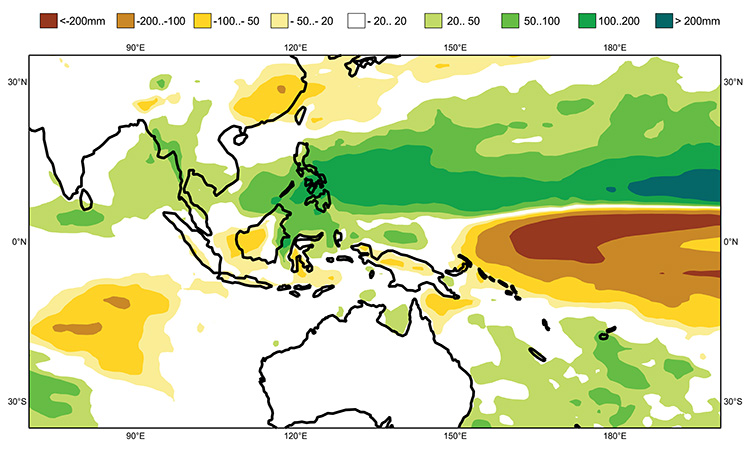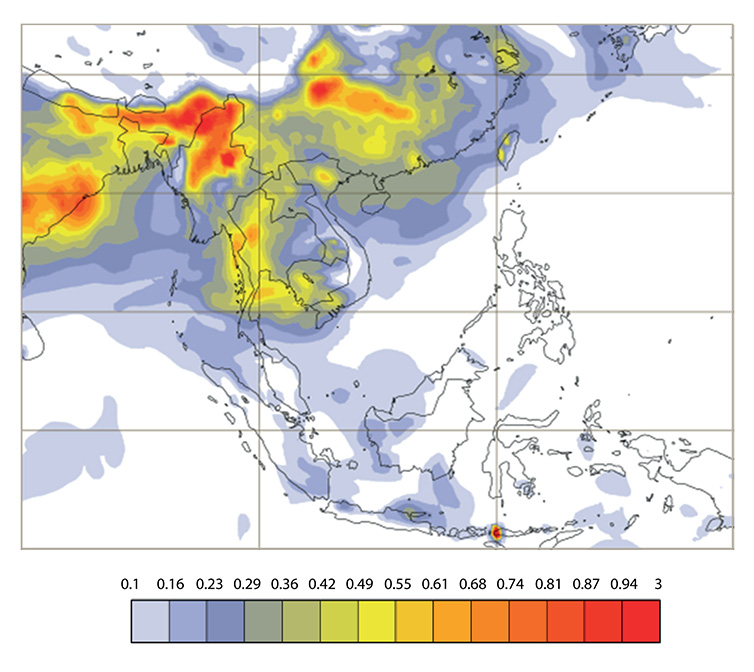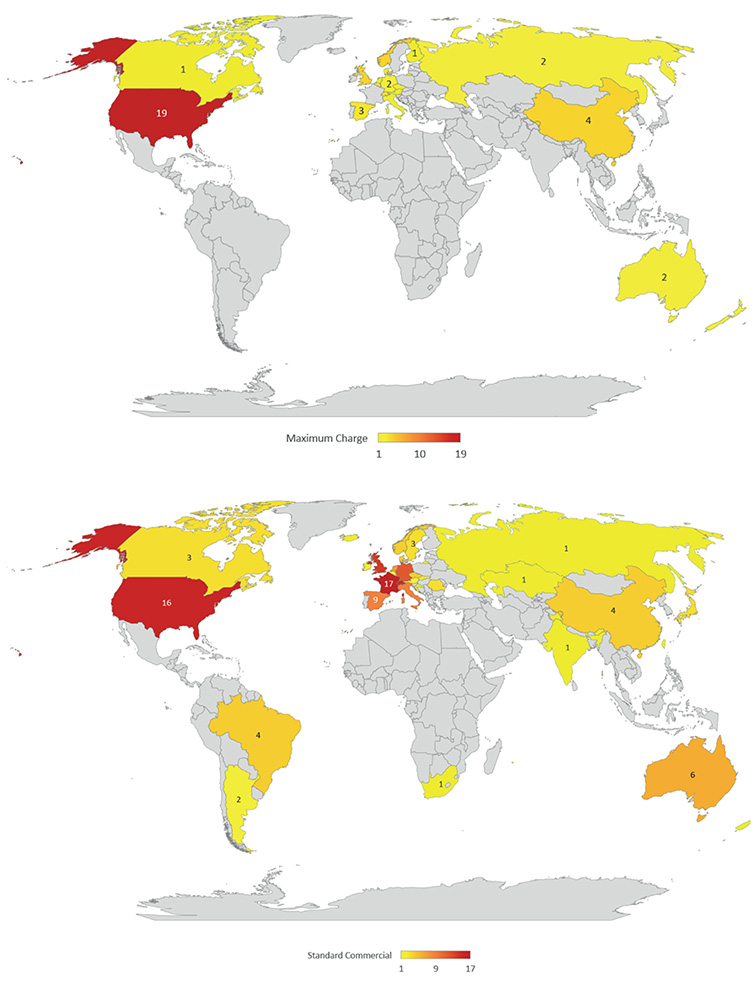
Erik Andersson, Deputy Director of Forecasts
In my role as Deputy Director of the Forecast Department, I’m looking forward to representing ECMWF at InterMET Asia in April, the region's largest assembly of meteorology professionals drawn from sectors such as transport, renewable energy and the water industry.
In two key-note speeches I will have the opportunity to present to this wide audience what ECMWF forecasts can deliver. The talks will focus on the products of the Copernicus Programme and ECMWF’s advances in weather forecasting.
As climate change continues and the risks from extreme weather events increase, national meteorological and hydrological services (NMHSs) across the region are investing heavily in upgrading their weather prediction systems. ECMWF is already investigating how its products could be applied more widely in the Asian region.
Climate monitoring and air quality forecasting services through the Copernicus Programme
As the climate changes, long-range forecasting (monthly and seasonal timescales) is becoming increasingly important. Users need to know the likelihood of extreme or unusual weather occurring in the coming months or season. Climate change means that past statistics are not a reliable guide as to what might happen in the future, and although the potential for more intense rainfall events is clear, the details of how extremes might respond to climate change are still very uncertain. In principle, seasonal forecasts allow us to calculate the expected range of possibilities for a forthcoming season, taking account of the drivers of climate change. Accurate calibration of risks remains a challenge, but today's operational systems have demonstrated skill in, for example, predicting early season precipitation in the South East Asia monsoon region.
The Copernicus Climate Change Service (C3S) provides high-quality seasonal forecasts on a global basis, to a global audience. The forecasts represent a blend of information from several participating forecast models, so-called multi-model seasonal forecasts. By combining information from several forecast models, the accuracy of seasonal forecasts significantly improves and the predictable signal is enhanced (see example in Figure 1).
C3S delivers climate reanalyses and climate change assessments as well as seasonal forecasts.
Although Copernicus is a European Programme, it is highly relevant to the InterMet Asia audience. All deliverables from the Copernicus Programme, including the multi-model seasonal forecasts, are free of charge and globally available for anyone to use – that is to say, not only in Europe, but also to users all around the world. Products are available either in graphical form from the C3S website, or as numerical data via download. The goal is that these products will provide the best ever seasonal forecasts, by incorporating and combining data from several of the world’s best forecast models.

Figure 1: Multi-model seasonal forecast from the Copernicus Climate Change Service (C3S), combining data from ECMWF, the Met Office UK and Météo-France. The plot shows the mean precipitation anomaly for the period March to May 2018.
Among its various data services, the Copernicus Atmosphere Monitoring Service (CAMS) delivers daily real-time analyses and forecasts of global atmospheric composition and estimates of emissions from wildfires and biomass burning. Both service lines are very relevant for the Asian region. Having daily information available on long-range transport of pollutants supports policy makers, businesses and citizens alike across sectors such as health, transport and energy.
Near-surface aerosols, ozone and other reactive gases such as nitrogen dioxide determine the quality of the air we breathe, affecting human health and the health of ecosystems. This is particularly an issue for mega cities. Furthermore, the air quality in parts of Asia has at times been badly affected by forest fires or sand and dust storms emanating from desert areas, such as the Gobi Desert. The forecast models are capable of accurately capturing the associated long-distance transport of such pollution and dust aerosol (see example in Figure 2). These are just some examples of possible applications of CAMS products in the Asian region.

Figure 2: Forecast of organic matter aerosol optical depth at 550nm, representing smoke from biomass burning emissions, from the Copernicus Atmosphere Monitoring Service (CAMS). The forecast was initialised on 12 March 2018, 00 UTC and is valid for 12 March 2018, 03 UTC. Adapted from CAMS aerosol forecast chart for Southern Asia.
C3S and CAMS are two components of the EU-funded Copernicus Programme. Both C3S and CAMS are operated by ECMWF for the European Commission.
Advances in weather forecasting
I will also be highlighting advances in ECMWF’s forecasting system (Figure 3) – including our clear direction for the future, as laid out in the ECMWF Strategy to 2025.
Our goal is that ensemble forecasting, at a resolution of 5 km globally, will deliver reliable predictions of the likelihood of occurrence of high-impact, severe weather events up to two weeks ahead. We expect that upgrades of the forecast model will improve the accuracy of typhoon intensity forecasts, as well as other strong wind and heavy rainfall events leading to storm and flood damage.
An Earth system modelling approach is being adopted in order to better incorporate the influence of the oceans, land surfaces, snow, sea ice, lakes and dust aerosol on weather.
Modelling is also focusing on weather patterns in the tropics and their influence on the subsequent development of large-scale weather-regime transitions in Europe, and more generally in the mid-latitudes, as these are associated with heat waves, cold spells and periods of drought or extreme precipitation.

Figure 3: Improvement in the skill of ECMWF precipitation forecasts in the period from 2002 to 2017 in terms of 12-month average of ensemble reliability (using the Continuous Ranked Probability Skill Score, CRPSS) in the extratropics. The plot shows that the forecast range with a level of skill corresponding to CRPSS=0.1 or better has been extended from 5 days in 2007 to 7 days in 2017. The ECMWF Strategy 2016-2025 sets out to extend further the skilful forecast range.
To serve its Member and Co-operating States, ECMWF is developing products in response to user needs. Large volumes of forecast data are easily accessible to a variety of forecast users.
Use of ECMWF’s products
The Asian weather markets are expanding rapidly. The interest in ECMWF weather forecast products from Asian companies is increasing, especially in the renewable energy sector. ECMWF has engaged with Asian partners in a research project seeking to maximise the benefit of weather forecasts in the wind power generation. There is enormous untapped potential to exploit also in other sectors such as solar power, water management, and flood protection.
ECMWF offers a wide range of global, real-time weather forecast products from the high-resolution model, the 50-member ensemble, as well as seasonal forecasts. Our website has more details.

Figure 4: As well as serving our Member and Co-operating States and others, ECMWF Data Services provide weather forecast products to commercial customers in 58 countries worldwide. The panels show the distribution of ‘large’ (top) and ‘standard’ customers (bottom).
The InterMET event targets participation from weather and environment services, such as the NMHSss, national environment agencies, and commercial weather services. Representatives from a vast array of end-user industries are expected: agriculture, airlines, power utilities, airport operators, ports, broadcasters and media, renewable energy companies, offshore oil and gas companies, construction and mining, sports and recreation, transportation, the public sector, defence and water utilities. ECMWF medium-range forecasts are extensively used commercially (Figure 4) and in research in relation to all these societal sectors, particularly in Europe.
The event will take place at the SUNTEC convention and exhibition centre, Singapore, 11-12 April 2018.
